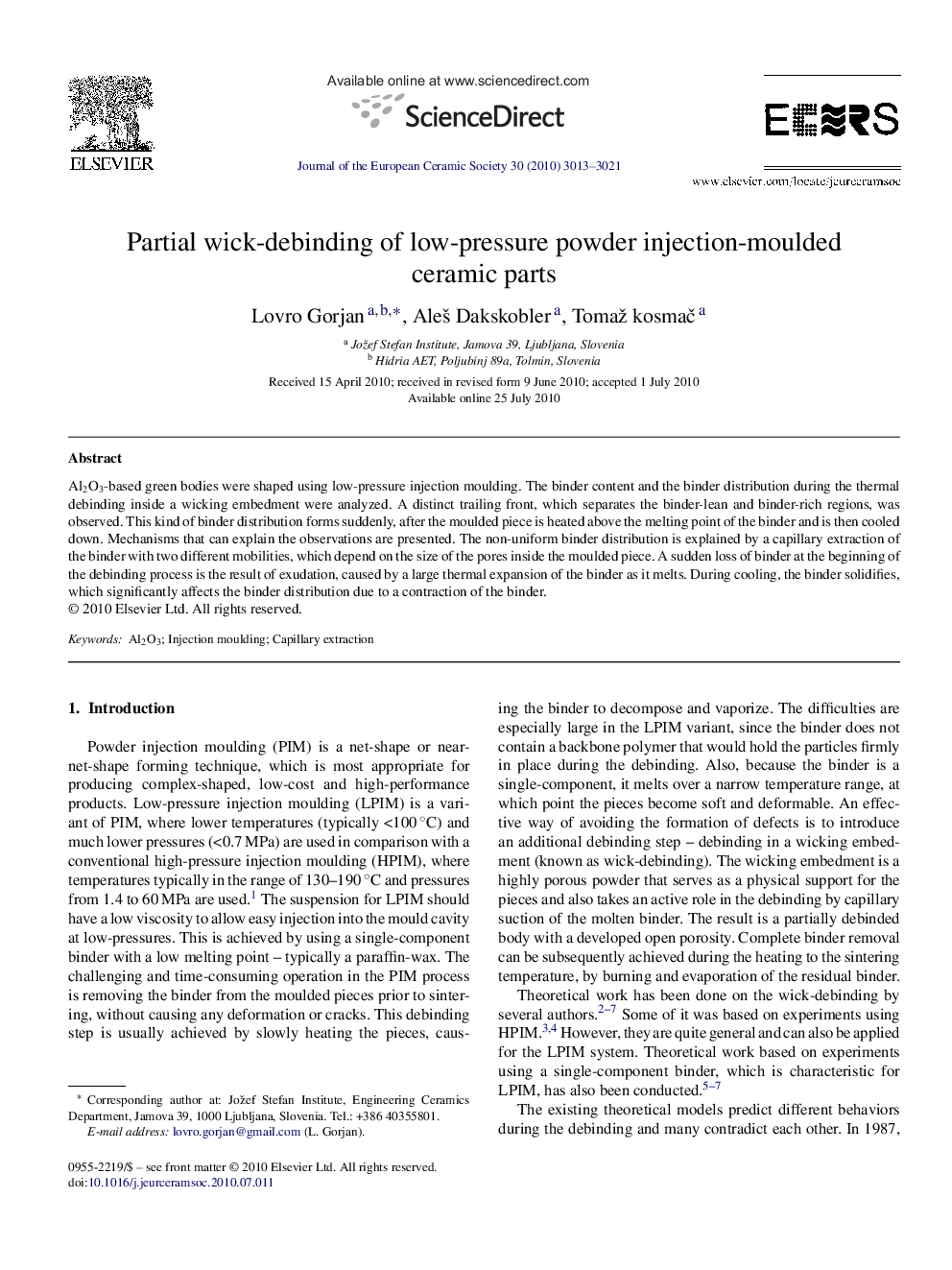| Article ID | Journal | Published Year | Pages | File Type |
|---|---|---|---|---|
| 1476486 | Journal of the European Ceramic Society | 2010 | 9 Pages |
Al2O3-based green bodies were shaped using low-pressure injection moulding. The binder content and the binder distribution during the thermal debinding inside a wicking embedment were analyzed. A distinct trailing front, which separates the binder-lean and binder-rich regions, was observed. This kind of binder distribution forms suddenly, after the moulded piece is heated above the melting point of the binder and is then cooled down. Mechanisms that can explain the observations are presented. The non-uniform binder distribution is explained by a capillary extraction of the binder with two different mobilities, which depend on the size of the pores inside the moulded piece. A sudden loss of binder at the beginning of the debinding process is the result of exudation, caused by a large thermal expansion of the binder as it melts. During cooling, the binder solidifies, which significantly affects the binder distribution due to a contraction of the binder.
